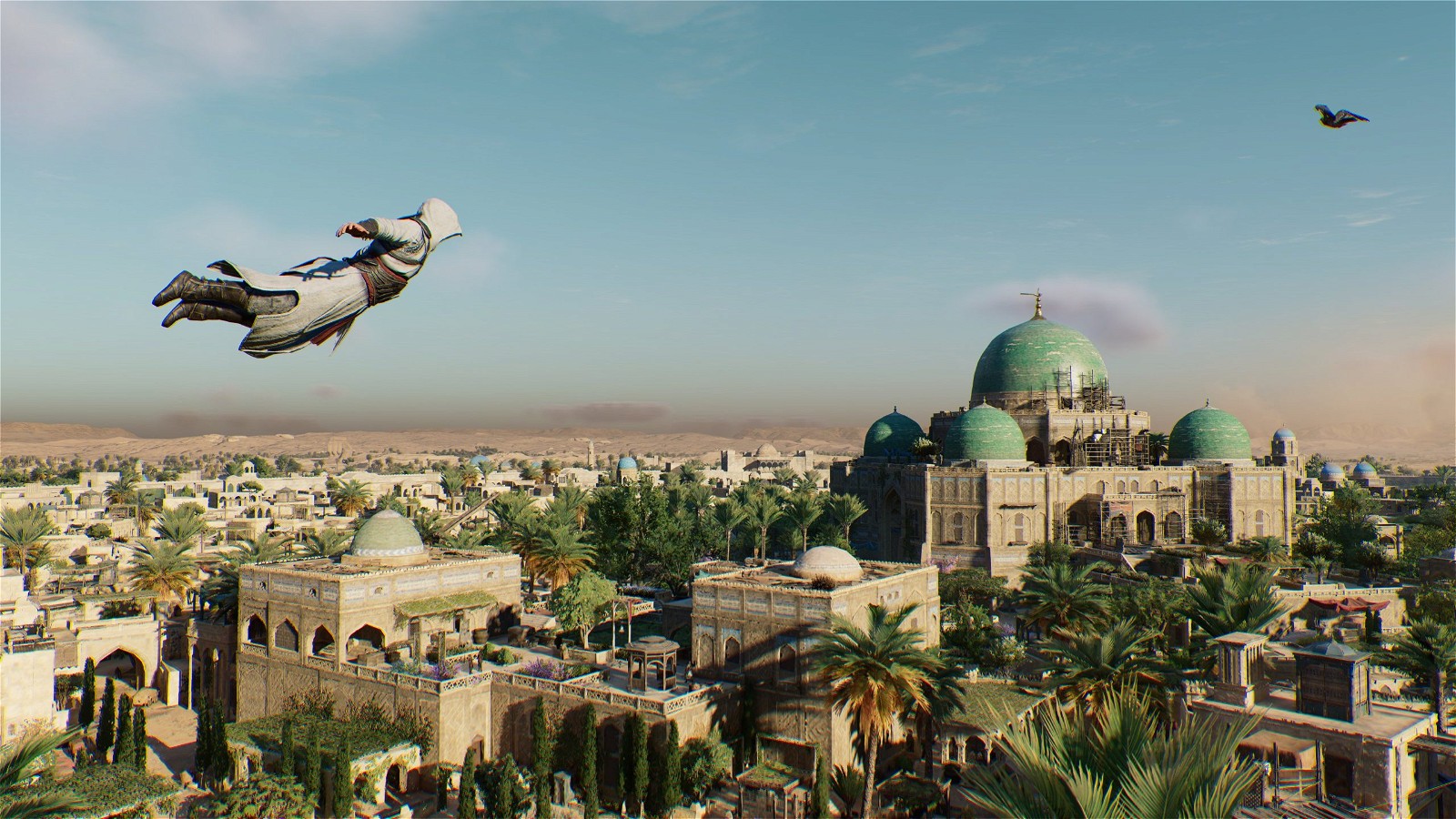Ubisoft’s Assassin’s Creed franchise has long walked the tightrope between historical accuracy and engaging gameplay. The latest entry in the series, 2023’s Assassin’s Creed Mirage, promises a back-to-basics approach, with a focus on 9th-century Baghdad and parkour-intensive gameplay.
While Ubisoft has gone to great lengths to simulate Baghdad as period-accurate as possible, like including the linguistic diversity of the city, studio historian Ralph Weyland admits that the developers had to take some liberties with historical depiction for gameplay purposes.
Ubisoft “Literally Moved Mountains” For Assassin’s Creed Mirage

In an interview with Game Rant, Weyland acknowledged that while Mirage strives for authenticity, certain elements had to be adjusted to “help gameplay.” One such instance is the surrounding mountains:
I can give you three quick examples. The first one is that when you’re in the city on the walls, you can see mountains in the background. There are no mountains close to Baghdad. They are like 300 kilometers away, so you cannot really see them. But we decided to bring them closer, we literally moved mountains. Because in the game, there is a part where you’re an apprentice in the mountains, in Alamut, and then you come back to Baghdad. We wanted to give you a visual feeling of how you’ve moved from there to here, so we put the mountains closer.
The rearranging of the mountains makes sense from a map design perspective, as Assassin’s Creed Mirage is supposed to be a tighter, more focused game than recent entries. Not to mention, bringing them closer also provides a beautiful backdrop to the city.
Another geographical adjustment involves the proximity of Baghdad’s rivers. Historically, the rivers flowed a considerable distance apart. In Mirage, however, the rivers are placed closer together, reducing the map size and creating a natural boundary, making navigation more manageable.
The Devs Baked A Color-coding System Into Baghdad

Perhaps the most interesting example, though, involves the color-coding of domes within Baghdad’s various districts. While historical records don’t suggest such a system existed, the developers assigned distinct colors to different domes. This allows players to easily identify their location and navigate the crowded city, prioritizing intuitive gameplay over strict historical adherence.
We gave them colors that they did not have because we wanted the players to understand where they are in the city by looking at them. It communicates if you have green minarets or blue minarets, something like that, then you must be in that neighborhood.
These adjustments are a great example of the contention developers face with historical adaptations. Strict adherence to detail can often be impractical to recreate, and result in an experience that feels clunky or inaccessible to a broad audience. Conversely, excessive creative license can incite outrage from players who wanted more accurate representation.

Mirage‘s initial reception may have been middling, but the developers’ balanced approach to gameplay and accuracy was complimented. It’s also commendable that Ubisoft made clear the historical liberties taken, as well as the reasons behind them. Transparency is never a bad thing.
Assassin’s Creed Mirage may not have been the spark that reignited interest in the series, but it did exceptionally well with its representation of 9th-century Baghdad, and with upcoming Assassin’s Creed games set in other historical eras, we can expect Ubisoft to deliver the same balance.




